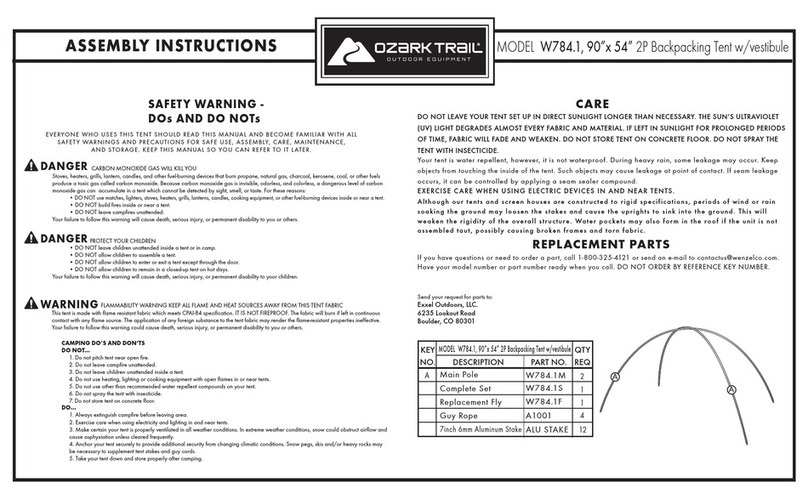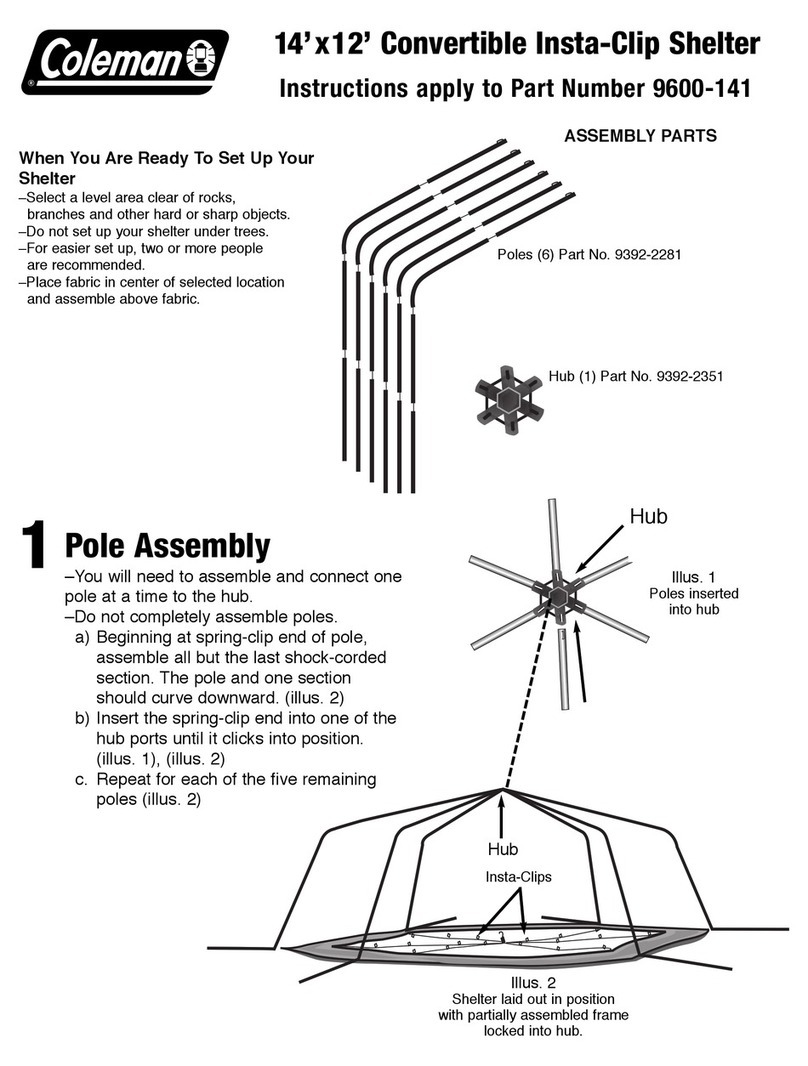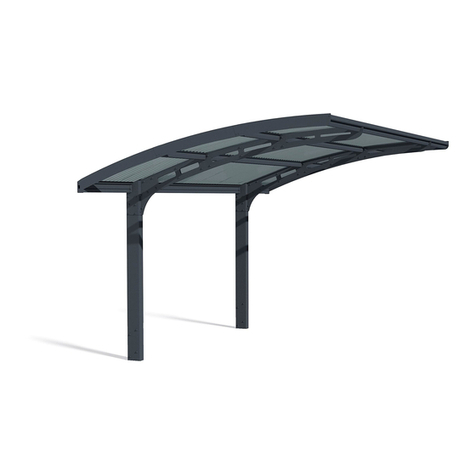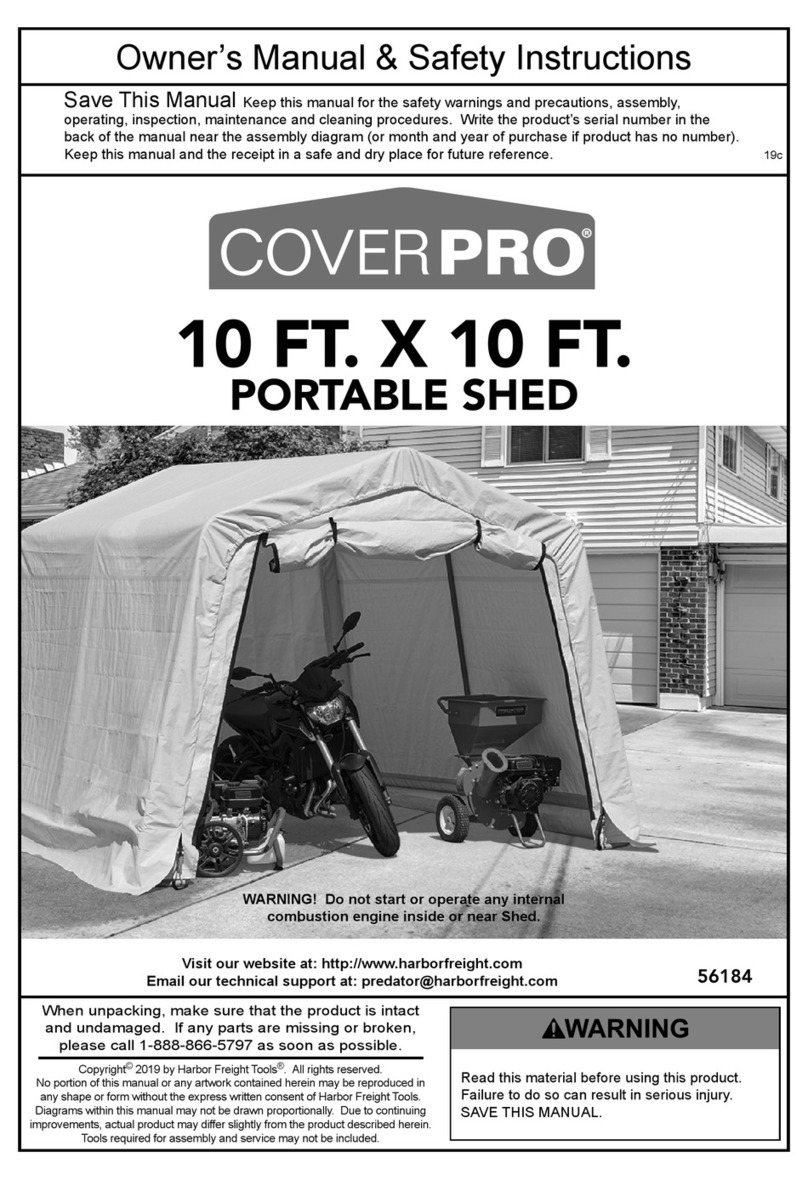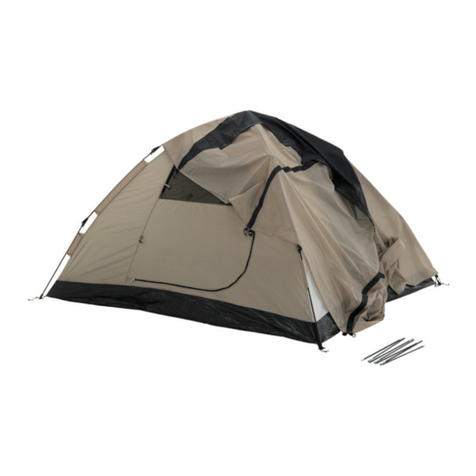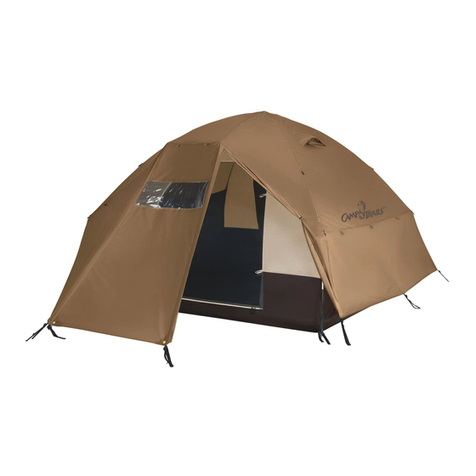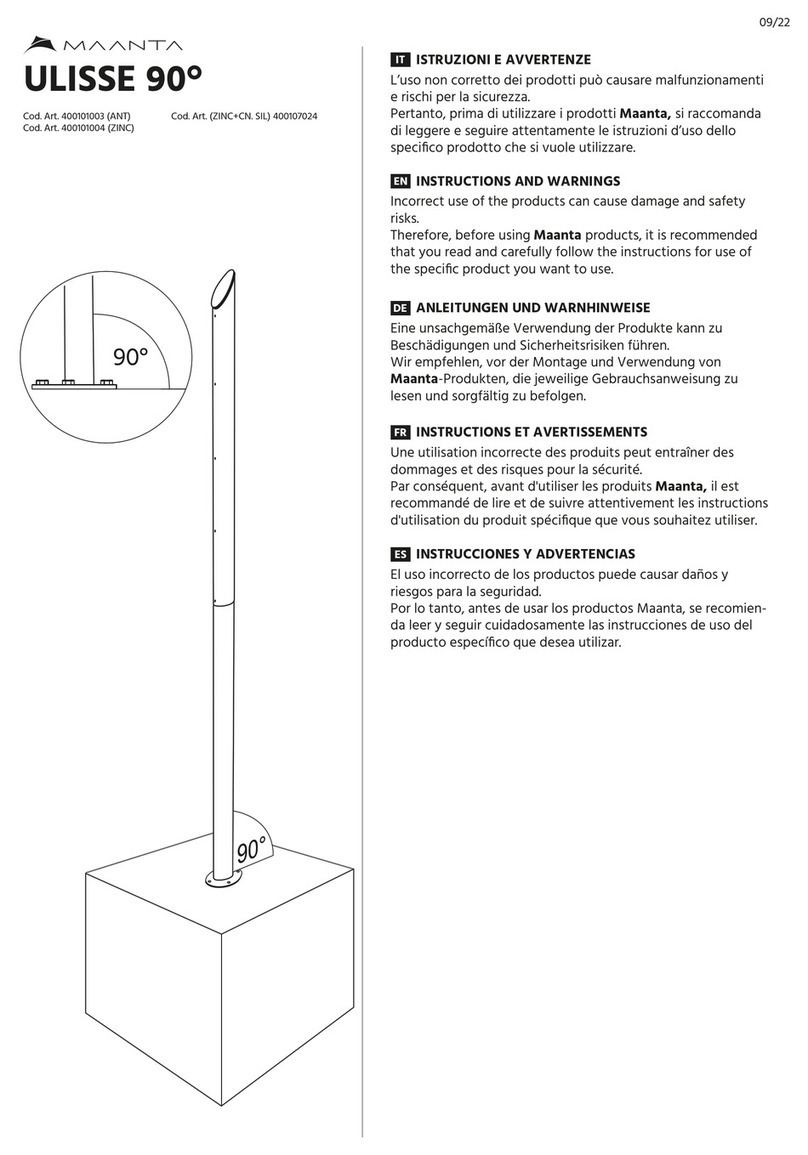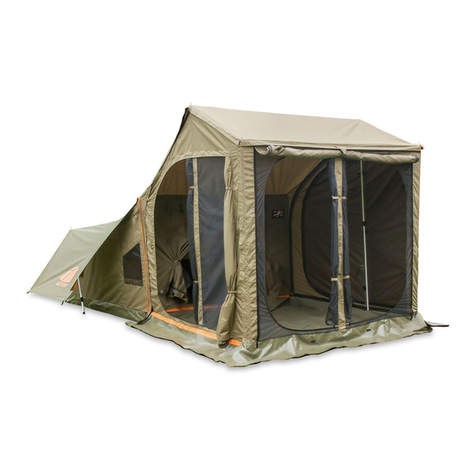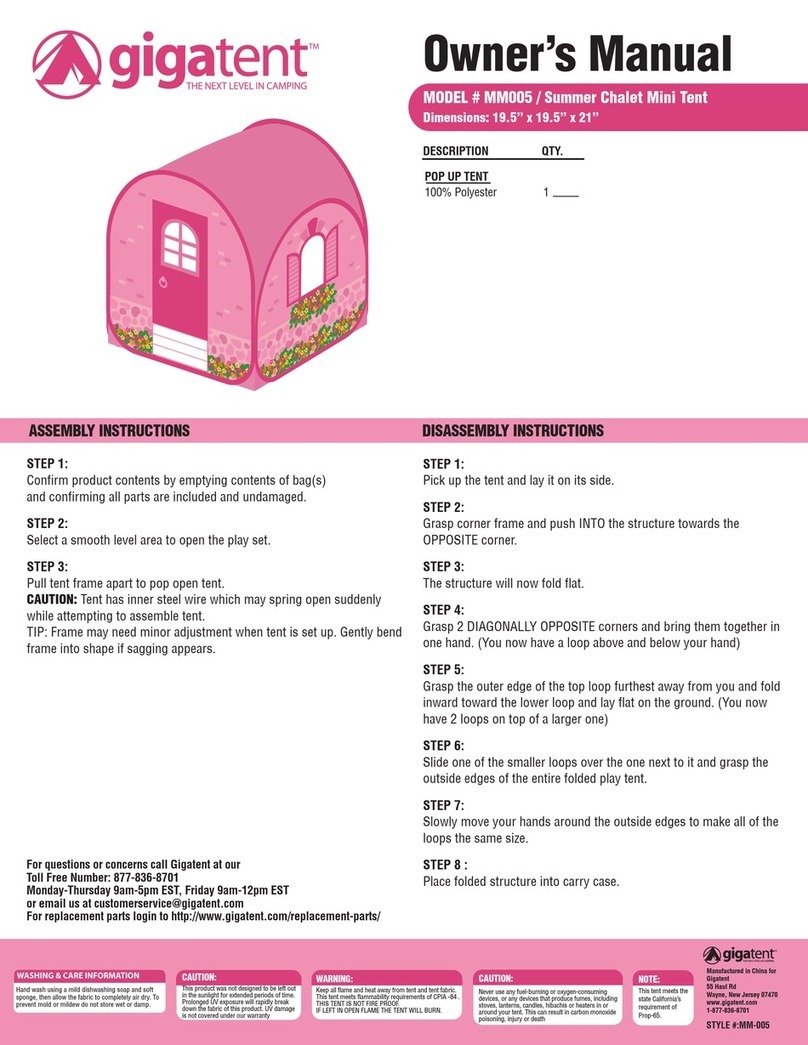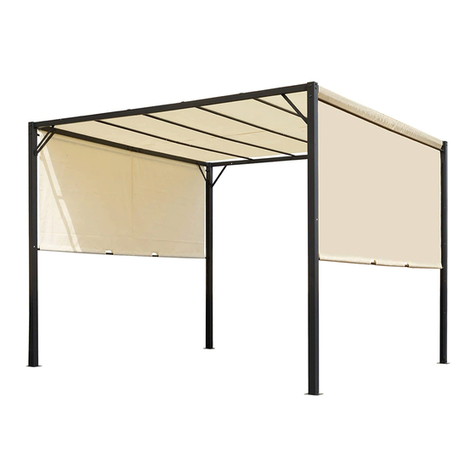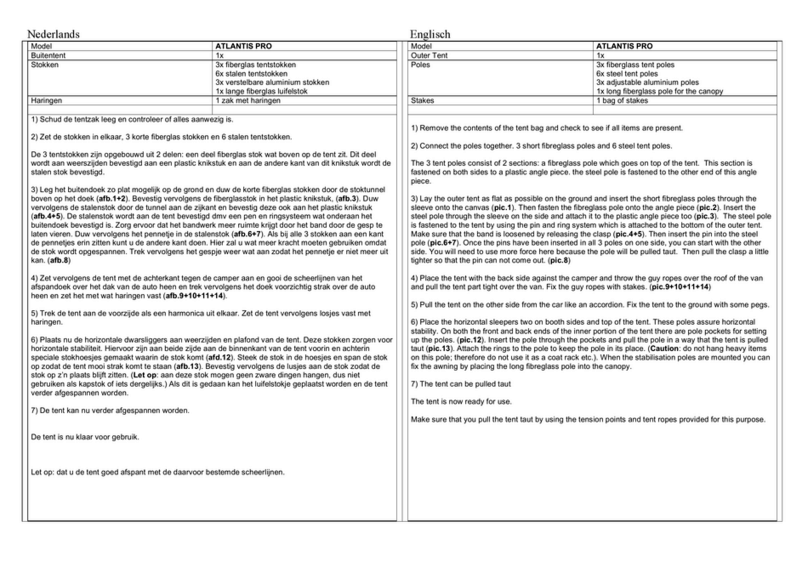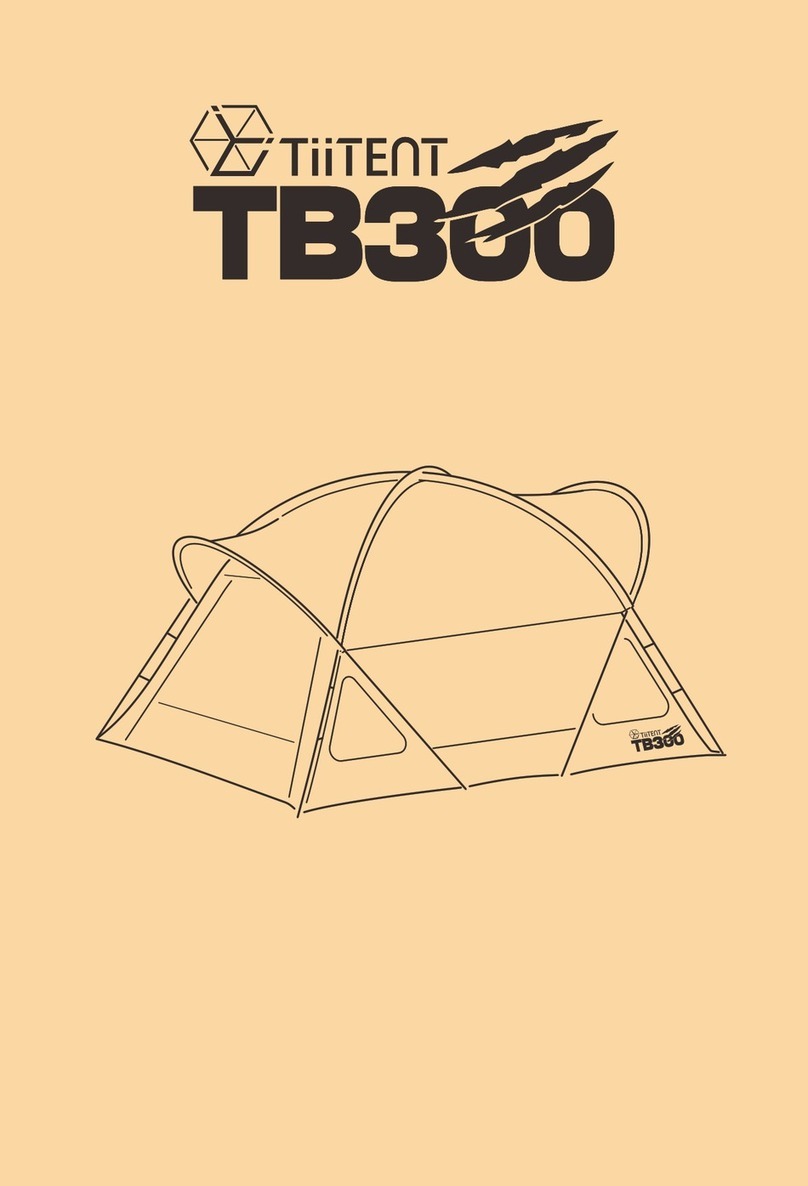
INSTRUKCJA MONTAŻU NAMIOTÓW PASCAL
2
WARUNKI
BEZPIECZEŃSTWA
ZALECENIA
1. Namiot stałociśnieniowy nie jest przeznaczony do użytkowania
podczas ekstremalnych warunków pogodowych takich jak silny
wiatr, silne opady deszczu lub śniegu, burze, gradobicia itp.
2. Produkt nie jest przystosowany do eksploatacji w warunkach
obciążenia śniegiem. Używając namiot w okresie zimowym, należy
usuwać gromadzący się na nim śnieg, jeżeli grubość pokrywy
śnieżnej osiąga wartość 2 cm.
3. W przypadku gromadzenia się wody na dachu namiotu, należy ją
niezwłocznie usunąć.
4. Rozstawiony namiot nie powinien być pozostawiony bez nadzoru.
5. Namioty mogą być użytkowane przy prędkości wiatru do 38km/h
pod warunkiem odpowiedniego zabezpieczenia ich. Podczas silnego
wiatru zaleca się bezwzględnie złożenie namiotu.
Uszkodzenia mechaniczne wynikające z niezastosowania się do
instrukcji nie są objęte gwarancją.
6. Trzymaj namiot z dala od źródeł ciepła i otwartego ognia. Nie
umieszczaj wewnątrz namiotu żadnych źródeł ciepła, mogą
doprowadzić do stopienia się materiału przy wysokich temperaturach.
7. Na specjalne zamówienie istnieje możliwość wykonania powłoki
namiotu z tkaniny trudnopalnej, spełniającej wymogi normy B1.
1. Przed przystąpieniem do rozłożenia namiotu należy dokładnie
zapoznać się z poniższą instrukcją montażu.
2. Podczas rozkładania i składania namiotu należy zachować ostrożność,
aby zapobiec obrażeniom ciała i innym szkodom.
3. Przed złożeniem namiotu do toreb transportowych należy go
dokładnie wyczyścić. Ewentualne zabrudzenia należy usunąć
z tkaniny za pomocą zwilżonej w ciepłej wodzie szmatki. Nie należy
używać detergentów ani myjek wysokociśnieniowych. Stosuj się do
zaleceń podanych przez producenta na metce.
4. Przed rozpoczęciem składania namiotu należy upewnić się, że
jest suchy. Jeśli jednak z przyczyn od użytkownika niezależnych
(np. pogody) namiot zostanie złożony wilgotny, należy najszybciej
jak to możliwe ponownie go rozłożyć w celu całkowitego wysuszenia.
5. Przy występujących porywach wiatru należy systematycznie
sprawdzać osadzenie wszystkich szpilek i kotew.
6. Jeżeli podmuchy wiatru przekraczają 38km/h, należy niezwłocznie
złożyć namiot.
7. Pod żadnym pozorem nie należy zasłaniać zaworów bezpieczeństwa.
8. Zachowaj szczególną ostrożność podczas transportu i składowania
produktu.
9. Nie narażaj produktu na uderzenia mechaniczne, przyciskanie
innymi produktami itp.
WARUNKI
GWARANCJI
Warunki gwarancji pobierzesz na stronie internetowej producenta.
UWAGA Powietrze zamknięte w produkcie zmienia swą objętość wraz ze zmianami
temperatury. Wysoka temperatura powoduje wzrost objętości powietrza
- produkt zwiększa swoją sztywność. Niska temperatura powoduje
zmniejszenie objętości powietrza - produkt traci sztywność.

